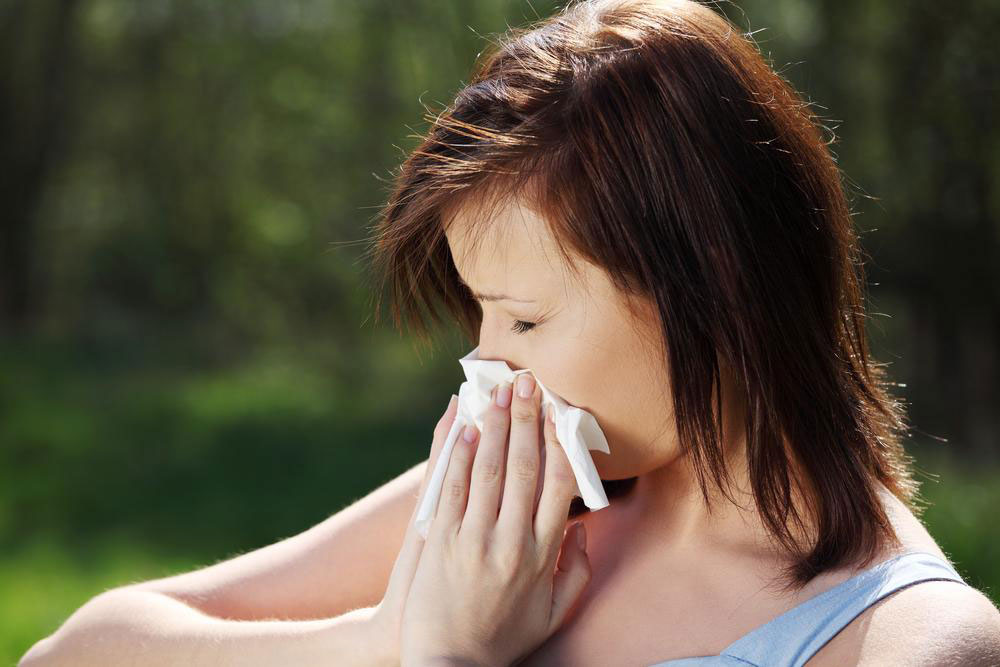A Guide to Dust Mite Allergy and its Symptoms

Have you ever imagined that a bug that is not visible to the naked eye could cause serious allergic reactions? Dust mites that can only be seen through a microscope can cause allergies that may even lead to breathing difficulties! Belonging to the tick and spider family, dust mites can be found in warm and humid environments.
Common places at home where these mites thrive are bedding, soft toys, upholsteries, and carpeting. These microscopic creatures feed on dead skin. On an average, around one and a half grams of skin is shed every day by an adult human. This is the best food for dust mites. A runny nose and sneezing fits are common dust mite allergy symptoms. Long-term exposure to these mites may result in asthma and sinus infections.
What is a Dust Mite Allergy?
Dust mites survive in any type of climate and almost any altitude. These are microscopic bugs that thrive in humid conditions and feed on the dead skin that shed by humans. As many as 20 million people in the country are affected by dust mite allergy.
When people are exposed to the waste products of dust mites, the immune system is triggered. As a result, antibodies are produced against normal, harmless substances. Dust mite allergy symptoms such as a runny nose, watering eyes, sneezing, and itching are triggered due to the immune system’s response. Although your home may seem clean, dust mites may be dwelling in your mattresses, cushions, upholstery and stuffed toys! They thrive on mattresses and pillows. Dust mite allergy symptoms increase over time as you continue to breathe in the waste particles of dust mites.
Symptoms of Dust Mite Allergy
Dust mite allergy symptoms are similar to that of nasal allergies like sinus or rhinitis. Common symptoms of dust mite allergy are as follows:
- Sneezing Fits
This is one of the first occurring symptoms. As you inhale dust mite waste, your immune system tries to sneeze out the allergen. - Runny Nose
A red, runny nose is another common symptom of dust mite allergy. - Itchy, Reddish, and Watery Eyes
This is a classic symptom of dust mite allergy. Very often, this symptom is confused with that of a pollen allergy. - Nasal Congestion
In some cases, runny nose is followed by nasal congestion. - Postnasal Drip
You may also experience postnasal drip as a reaction to dust mites. - Cough
Sometimes dust mite waste inhalation may cause a cough and chest congestion - Facial pressure and pain
- Swollen, blue-colored skin under the eyes
- Urge to rub nose frequently (this is common in children).
Long-term inhalation of dust mite wastes may lead to complications, such as those mentioned below:
- Breathing Difficulty
When the dust mite allergy worsens, the respiratory tract is affected. This causes breathing difficulty. - Tightness or Pain in the Chest
The respiratory tract is affected by prolonged exposure to dust mites. As a result, the lungs are also under pressure, causing chest pain. - Wheezing
This is a complication of prolonged dust mite exposure. A distinct whistling sound may occur when you exhale. - Sleeping Trouble
Chest tightness or breathing difficulty may cause sleeping trouble. - Continuous Cough or Wheezing
Bouts of a cough or wheezing are common complications of prolonged dust mite allergy.
Dust mite allergy may be mild or severe. It may occur occasionally, where it causes a runny nose, watery eyes, and sneezing. In severe cases, it results in chronic wheezing or a cough, facial pressure, and chest congestion.
Mild symptoms of dust mite allergy are often ignored or mistaken as a common cold. If symptoms persist or become severe, you need to seek emergency medical help. Especially, when symptoms like chest pain, wheezing, coughing or facial pain appear, medical treatment of dust mite allergy is essential.
Preventive Methods of Dust Mite Allergy
There are a number of ways to prevent dust mite allergy. The best way is to minimize dust mites at home by implementing the following:
- Use dust mite covers for mattresses and pillows
- Use cots with wood or metal frame
- Regularly wash pillow covers, bedspreads, and comforters
- Use hot water to wash mattresses
- Maintain cleanliness of stuffed toys
- Clean mattresses before summer sets in as this would kill mites that might have survived winter
- Use an electrical blanket to reduce humidity on the bed
For creatures as small as dust mites, they sure do cause severe allergy symptoms! From watery, red eyes to worsening of asthma, dust mite allergy can be quite troublesome. One way to combat dust mite allergy symptoms is to prevent exposure to them by using dust mite covers on pillows and mattresses. People who are allergic to dust mites may experience complications like asthma or sinus upon exposure to mites.